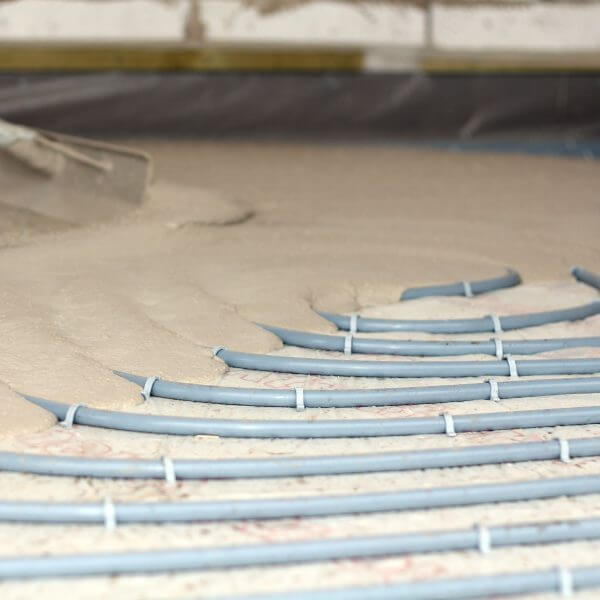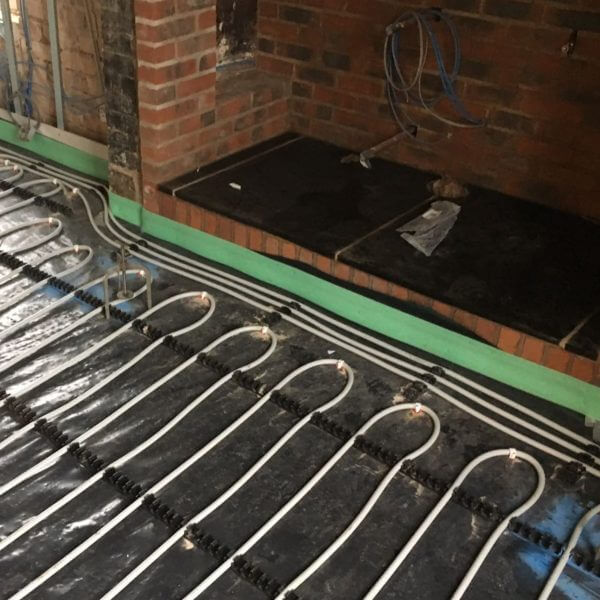Is Underfloor Heating Bad for Your Health? Underfloor Heating Myths Busted
“Is underfloor heating unhealthy”, “is underfloor heating bad for you”, “does underfloor harm your health”… This may be an unusual series of questions, yet they are among the 40 most searched queries in the UK for wet underfloor heating.
Of course, it doesn’t hurt to be cautious when researching the pros and cons of the most efficient way to heat houses. To our knowledge, modern underfloor heating of good quality cannot be directly harmful to your health. In many cases, it does the opposite and helps to improve living standards in homes.
In today’s blog, we’ll explore what exactly makes some people believe underfloor heating could be bad for them, why that isn’t the case, and how underfloor heating really works to improve your living standards.
Does Underfloor Heating Cause Cardiovascular Problems?
In the early 2000s, the idea circulated that underfloor heating would unnaturally heat the legs and cause cardiovascular problems. It was thought that by standing on a warm floor surface for long periods of time, you could negatively affect blood flow in the legs. Furthermore, some thought it would make your legs “feel too heavy”, exacerbate existing circulation issues, or cause varicose veins.
A study in 2008 stated that a heated floor could affect blood flow, but in a positive manner. It also theorised that wet underfloor heating could provide health benefits if used at the right temperatures. To date, no study has proven that it causes varicose veins or poses a danger to people with circulation issues.
Does Underfloor Heating Cause Dust Mites?
Dust mites are microscopic insects and part of the natural ecosystem of your home. They’re not toxic and don’t bite you. However, many people suffer from dust mite allergies, so it’s important to ensure their population is kept in check.
Because dust mites thrive in warm and dusty environments, there are people out there who think heated floors would make the population grow out of control. In fact, what happens is the opposite. Radiators circulate and accumulate dust as they work, but wet underfloor heating doesn’t. While the dust mites may enjoy the warm floor, there is less dust in circulation for them to thrive on.
Does Underfloor Heating Cause Burns?
If you have put your bare foot on a pavement during a heatwave, you’d understand why this myth gets circulated. While there have been stories of underfloor heating that is too hot to walk on, this is often caused by rogue installations.
The most common boiler flow temperature is 40°C, which is 2–4 degrees above a typical hot shower. This decreases slightly as the water travels from the manifold, and when it transfers through the liquid screed and floor coverings. By the time it reaches your feet, it would barely cause discomfort, and certainly no burns.
If you are experiencing extreme discomfort, your boiler flow temperature has been set too high, or your pipes have been laid too close together. When EasyFlow designs the most efficient way to heat houses, we always ensure the layout of pipes is evenly spaced to prevent hot spots from forming.
Does Underfloor Heating Cause Damp and Mould?
Poorly installed systems do, good quality systems don’t. The floor needs to be sufficiently prepared with floor insulation and/or damp-proof membranes to ensure moisture can’t build up or be transferred to the walls by capillary action. Without these, moisture can build up in the floor screed.
When wet underfloor heating was invented, the earliest versions of the system had problems with moisture and damp buildup. In the modern day, these issues have been resolved through better designs. In fact, you should have reduced levels of damp in the home. Heat distributed evenly across a room will make it easier for moisture to evaporate, reducing the chance of mould in the home.
So, Is Underfloor Heating Unhealthy?
Underfloor heating has been shown to not cause varicose veins, an increase in dust mites, or damp when installed properly. It is also safer than radiators, as fewer hot parts are exposed in a room.
The number one takeaway from these myths is that a well-installed heating system can provide more benefits to your living space. On the other hand, a poorly designed one can cause issues. It’s why we always recommend you trust in qualified installers rather than cut corners.




Where To Find Us